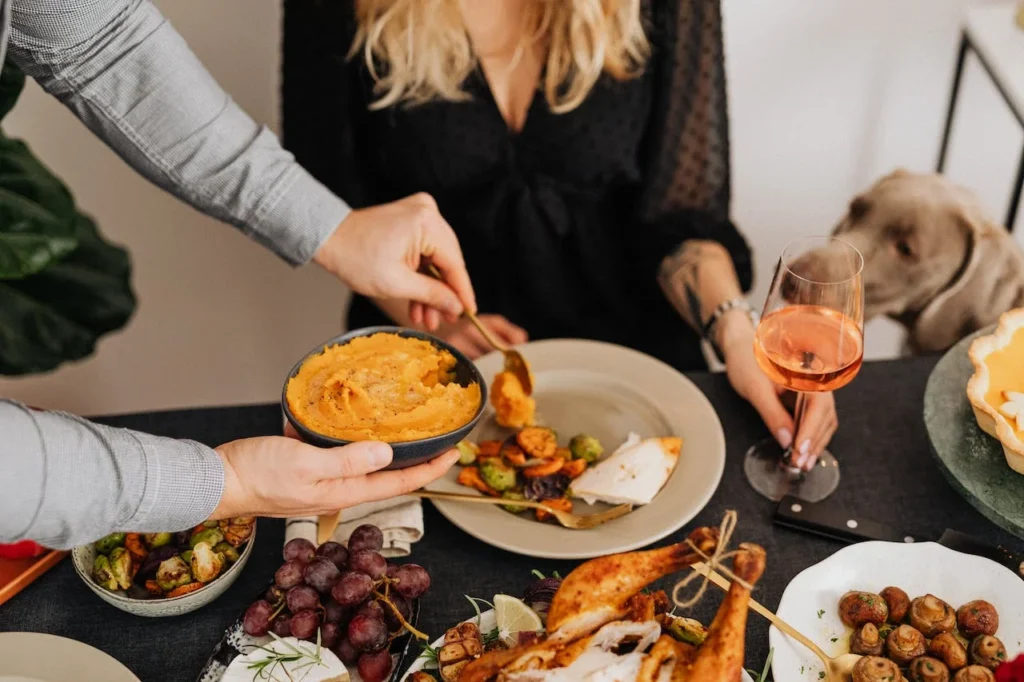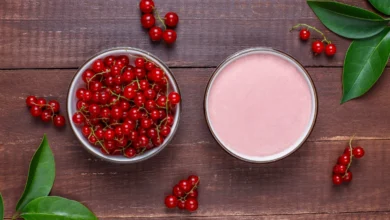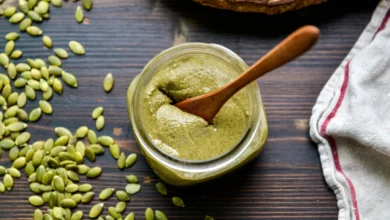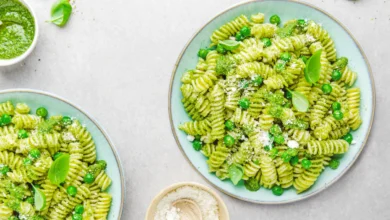Oven Roasted Spiced Vegetables Recipe: A Complete Guide

Nothing says summer like fresh, vibrant vegetables straight from the garden. I love how versatile veggies are for roasting in the oven – it brings out their natural sweetness and transforms them into a delicious side or meal. My go-to recipe is a classic combinations of vegetables that always comes together for an exciting addition to any table. I’ll toss zucchini, summer squash, and bell peppers with a bit of olive oil, sea salt, and red onions. Then I’ll season it all with cayenne pepper to give it a hint of heat. Sometimes I’ll mix it up by substitute the cayenne for crushed red pepper flakes or chipotle powder. Once coated, I spread the vegetables out on a baking sheet and roast them at 400 degrees F until tender and caramelized, about 25 minutes. It’s the perfect easy and healthy way to enjoy fresh veggies even on busy weeknights.


Contents
- Why You’ll Love This Dish
- What you will need
- Oven Roasted Vegetables: Tools required
- How to Make Spicy Roast Vegetables
- Roasted Vegetable Seasoning
- How To Roast Vegetables
- How Long To Roast Vegetables
- Variations
- How to Store
- Nutrition Facts (per 1 cup serving)
- How to Serve
- FAQs
- 1: Can roasted vegetables be made ahead of time?
- 2: What vegetables roast well together?
- 3: Can roasted vegetables be served cold?
- 4: What temperature is best for roasting vegetables?
- 5: Which vegetables are commonly suitable for roasting?
- 6: Should you salt vegetables before roasting?
- 7: Are Roasted Vegetables still healthy?
- 8: Should you season vegetables before roasting?
- 9: How long does it take to roast vegetables at 400 ?
- 10: When roasting vegetables, where should you place the rack in the oven?
- 11: Can you roast frozen vegetables?
- 12: What is the secret to crispy roast vegetables?
- 13: Should you add dry spices before or after roasting vegetables?
- 14: How do you spice up vegetables?
Why You’ll Love This Dish
I grew up watching my dad make his special roasted vegetable recipe countless nights each summer. While I’ve since ventured out and developed my own easy roasted vegetables recipe, those childhood memories always take me back. Much of what I learned from dad I still apply to my roasting pan technique today – allowing the natural flavors of the vegetables to shine through with a simple seasoned of olive oil, salt, and pepper. I’ll sometimes add extra heat with cayenne or red pepper flakes depending on my mood. No matter the exact formula, the results are always a delicious, caramelized side dish that’s packed with flavor.
There’s something so satisfying about tossing vegetables with a few indulgent ingredients then walking away while the oven does all the work. Whether as a stand-alone meal or as an accompaniment, these spicy roasted veggies are sure to become a new favorite dish you’ll find yourself making on repeat. The best part is they freeze beautifully, so you can make a double batch and enjoy this easy recipe any night of the week. Just pull portions from the deep freeze and into a hot oven they go! Within an hour you’re treated to warm, crunchy vegetables that are far better than any store-bought frozen alternative.


The versatility of this recipe is another reason you’ll find yourself making it on a regular basis. While these roasted vegetables simply enjoy as a side, you can also quickly turn them into hearty vegetarian or meat-inclusive meals with the addition of proteins like steak, chicken or tofu. Imagine scooping soups, topping salads, or filling grain bowls with a hot spoonful of the roasted medley. I also love starting my day with a breakfast wrap filled with the vegetables, a poached egg and avocado. Between snacks, weeknight suppers and weekday breakfasts, this dish offers plenty of potential that makes it worth the small time investment. Don’t be surprised if roasted vegetables become a new kitchen staple in your home as well.
With a combination of roasted zucchini, peppers and other seasonal veggies, this is about as nutritious and vibrant an addition to your meal repertoire as you’ll find. Not only is it a delicious and completely vegetable-based healthy meal, but it also offers your body an excellent source of fiber, vitamins and minerals from its colorful, flavorful ingredients. Whether enjoyed as a side or on its own, this vegan-friendly recipe will quickly become a new favorite thanks to its nutritional perks alone. With minimal effort, you can feel good about fueling your body with nutrients from the garden through a warm dish of seasonal roasted vegetables.
What you will need
- This oven roasted vegetable recipe is a classic combination of zucchini, summer squash, bell peppers an1d red onions that comes together for an exciting addition to any meal.
- The versatile recipe allows you to easily enjoy fresh garden vegetables even on busy weeknights, with the oven doing all the work while they roast.
- Influenced by memories of his father’s cooking, the author has developed his own version of the easy roasted veggie recipe but still applies techniques learned as a child.
- A simple seasoning of olive oil, salt, pepper and sometimes cayenne or red pepper flakes lets the natural flavors of the vegetables shine through.
- The results are a delicious, caramelized side dish packed with flavor that’s satisfying to enjoy or add to other dishes for more complete meals.
- The recipe is nutrient-dense and vibrant and provides fiber, vitamins and minerals from colorful, flavorful seasonal vegetables.
- Minimal basic pantry ingredients are called for, including peppers, zucchini, summer squash, onion and olive oil for tossing, along with salt, pepper and optional heat additions.
Feel free to get creative with the vegetable combinations and seasoning to suit your tastes.
Oven Roasted Vegetables: Tools required
Pan Size
A 15×21 inch sheet pan allows vegetables to spread out without crowding, promoting better caramelization and faster cooking time compared to a smaller pan.
Crowding Saves Time
Not overcrowding the pan with veggies also reduces the overall baking time in the oven.
Board
A sturdy, stable cutting board provides a surface for safely prepping and chopping a variety of vegetables, from root vegetables to squash.
Knife
Possessing a sharp chef’s knife as opposed to a dull knife makes the task of cutting vegetables more efficient and less frustrating.
Tools
Using the right tools, like a large sheet pan and sharp knives, makes all the difference in obtaining perfectly roasted veggies with desirable textures and flavors.
Ingredients
A simple roasted vegetable side dish or meal comes together quickly with minimal basic pantry ingredients, most likely already stocked at home.
Seasonings
Seasoning of olive oil, salt, pepper and optional heat allows the natural flavors of vegetables to shine through.
Dish
The recipe yields a satisfying appetizing side or meal full of nutrients from colorful seasonal produce.
How to Make Spicy Roast Vegetables
Preheat your oven to 450 degrees Fahrenheit (232 degrees Celsius).


Prepare your vegetables:
Step One: Slice red bell peppers into 1 to 2-inch bite-sized pieces.
Step Two: Slice orange bell peppers into 1 to 2-inch bite-sized pieces.
Step Three: Cut zucchini into 1 to 2-inch pieces.
Step Four: Chop Summer squash into cubes.
Step Five: Chop your red onion in half, then into bite-sized pieces.
Step Six: In a large bowl, sprinkle the vegetables with salt and pepper, cayenne, and drizzle with olive oil. Toss to coat evenly.
Step Seven: Place vegetables in a single layer on a roasting pan or baking sheet.
Step Eight: Roast at 450 degrees Fahrenheit for about 30 minutes or until the vegetables are tender.
Roasted Vegetable Seasoning
Taking your roasted vegetables to the next level involves developing an incredible flavor-packed seasoning blend. I make a whole bunch at once to have on hand for sprinkling over a variety of veggies. This homemade seasoning is a real game changer – it elevates roasted pieces to a new favorite in our home. Inspired by the robust flavors of Tuscan cooking, my adapted seasoning recipe includes dried rosemary, thyme, oregano and basil along with salt and pepper. It adds richness that’s perfect whether sprinkled on roasted potatoes or stirred into a hearty Crockpot roast braise. With minimal effort, you can craft a versatile seasoning that adds delicious layers of taste to many dishes both savory and sweet. Give this seasoning a try – I promise it will become a staple in your kitchen.
Completely changing the flavor profile is as easy as changing up the seasoning blend.
A few ideas:
- For Mediterranean roasted vegetables, toss the veggies with garlic powder, dried basil, dried Greek oregano, dried parsley, and dried onion powder and thyme.
- Give the veggies a Mexican flair by tossing them with taco or fajita seasoning.
- Add 1-2 teaspoons of Everything Bagel Seasoning for a fun flavor twist. Don’t add extra salt since the seasoning is salty already.
- Roast the veggies then drizzle with a balsamic vinegar reduction or dressing. Follow directions to make the reduction while the veggies bake.
- Finish the roasted veggies with a squeeze of fresh citrus and a drizzle of vinaigrette. Add a pinch of red pepper flakes for heat.
How To Roast Vegetables
Prep the Vegetables
Peel or scrub any veggies needing it, wash, then thoroughly dry with a towel to remove any excess moisture. This helps them brown rather than steam.
Toss with Oil and Seasonings
Add the veggies to a large bowl along with olive oil, salt, pepper and any other seasonings. Toss with your hands until fully coated. It’s okay to get your hands a little dirty!
Roasting Time
Trust your intuition on roast times as they can vary slightly based on veggie size, actual oven temperature and type. Watch veggies closely and check for fork-tenderness and crispy, caramelized exteriors when done.
Almost Done
Once veggies are done roasting, taste and season further if needed, adding a pinch more salt or grinds of pepper to bring out maximum flavor.
Serve and Enjoy! The roasted veggies are now ready to serve while still hot and devour their delicious flavors.
How Long To Roast Vegetables
Step 1: My favorite blend includes potatoes, red onion, Brussels sprouts, and carrots. Roasting them together works well since they have similar cook times. Cut to similar sizes also helps them cook evenly.
Step 2: Harder, denser veggies like sweet potatoes, parsnips, butternut squash, and beets roast nicely in 35-45 minutes. Brussels sprouts and carrots also fall in this timing range.
Step 3: Softer veggies on the other hand, such as zucchini, bell peppers, sweet corn, and summer squash, need only 15-20 minutes in the oven.
Step 4: More delicate veggies like thin asparagus or green beans may only require 10-20 minutes depending on thickness.
Step 5: When roasting a combination of hard and soft veggies, stagger the roast times. Add quicker-cooking veggies to denser veggies halfway through or leave room to add them in later once space frees up on the pan.
Variations
1- Winter Veggies
In winter, try roasting sweet potatoes alongside Brussels sprouts and parsnips for a hearty mix.
2- Spring Veggies
Asparagus and fennel are delicious roasted veggies in spring.
3- Summer Veggies
In summer, roasted cherry tomatoes, zucchini, bell peppers and summer squash are vibrant options.
4- Fall Veggies
For fall, cauliflower florets, broccoli and carrots are wonderful roasted.
5- Spice Options
Play with different spices like thyme, rosemary, Italian seasoning or Herbs de Provence.
6- Blend Your Spices
Try blending spices like cumin, coriander and garlic powder or curry powder for added flavor.
7- Sauces and Garnishes
Drizzle roasted veggies with Honey Jalapeño Lime Vinaigrette or top with a spoonful of Creamy Dill Sauce. Garnish with fresh herbs like basil, parsley or cilantro.
How to Store
Refrigerator: Leftover roasted vegetables can be stored in an airtight container in the fridge for 3 to 4 days.
Freezer: For longer storage, cool fully then transfer roasted veggies to an airtight resealable plastic bag or silicone storage bag. Freeze for up to 3 months. Veggies maintain texture well when frozen. Consider adding some to soup or stew.
Reheating: To serve again, place frozen veggies in a single layer on a baking sheet and warm through in a 400°F (204°C) oven until hot. Or place a serving in a microwave-safe bowl and microwave in 30 second intervals until warmed through.
Storing roasted vegetables properly in the fridge or freezer helps you enjoy the leftovers for several days while maintaining the delicious texture and flavor from the initial cooking process.
Here are the nutrition facts for a serving of roasted vegetables:
Nutrition Facts (per 1 cup serving)
| Nutrient | Amount |
|---|---|
| Calories | 53 |
| Total Fat | 3g |
| Carbohydrates | 6g |
| Protein | 1g |
This subsection provides a simple breakdown of key nutrition information for a standard single serving size of roasted vegetables.
How to Serve


As Sides
Spiced roasted veggies make an amazing side pairing for a variety of proteins. They’re delicious served alongside Chicken Italian Cutlets, crisy Cast Iron Chicken, or sunny slow cooker dishes like Slow Cooker Chicken Enchiladas.
In Grain Bowls
Build roasted veg into wholesome Grain Bowls, a personal favorite one-bowl meal.
With Marinated Meats
Flavorful marinated meats like Ranchera Beef or carne asada are a spicy, citrusy companion.
Pairing with Fish
Roasted vegetables also complement simply prepared fish nicely, such as marinated Furikake Salmon with its soy, ginger and garlic flavors or broiled tilapia with lemon.
The versatility of roasted vegetables allows them to be incorporated into many types of dishes from one-pot meals to protein-centered plates. Their big flavors mingle wonderfully with global cuisines and cooking methods.
Conclusion
Roasting vegetables brings out their natural sweetness and transforms them into a satisfying dish full of flavor from simple seasoning. With minimal effort, you can enjoy tasty, nutritious roasted vegetables all year long by mixing up the combinations to highlight the seasons.
For more recipes, and culinary lifestyle, explore the rest of our blog.
FAQs
1: Can roasted vegetables be made ahead of time?
Roasted vegetables can be made up to 3 days in advance. The texture will be best if you roast them directly and reheat later rather than making entirely ahead of time.
2: What vegetables roast well together?
Vegetables that roast together well are usually in the same season or have similar cook times so they finish together. Great results often come from experimenting to find your favorite combos.
Some of the best vegetables to roast together for maximum flavor are root vegetables and hearty winter veggies. Potatoes, parsnips, carrots, and Brussels sprouts all have similar textures and cook times so they will roast to perfection together on a sheet pan. Their flavors also complement one another beautifully. The natural sugars in the carrots caramelize just right alongside the earthier parsnips and potatoes. And Brussels sprouts take on a sweeter side when roasted in this company. This root vegetable medley mixes cozy fall and winter tastes to create a nourishing and tasty roasted vegetable combo. Experimenting with roasting these vegetables and other seasonalstandalone additions like cauliflower or butternut squash allow you to discover new favorite combinations.
3: Can roasted vegetables be served cold?
Yes, roasted vegetables also work perfectly in chilled bowls or salads. Their flavor gets even more complex once chilled.
4: What temperature is best for roasting vegetables?
425 degrees F (218.3 degrees Celsius) is the perfect temperature for roasting a blend of root vegetables so their exteriors caramelize while the insides become fork-tender. Other veggies like broccoli or cauliflower may roast at a higher temperature for browning. An internal oven thermometer is invaluable for ensuring your oven is running at the set temperature.
5: Which vegetables are commonly suitable for roasting?
Almost every vegetable can be roasted for extra flavor and it’s a delicious way to cook carrots, potatoes, Brussels sprouts, eggplant, cauliflower, peppers, parsnips, beets and more – the possibilities are endless
6: Should you salt vegetables before roasting?
Salting vegetables before roasting allows the salt to draw out their moisture so they crispen up and achieve maximum flavor in the final product. It results in a much crispier texture.
7: Are Roasted Vegetables still healthy?
While heating causes some nutrients to be destroyed, roasted veggies retain many of their antioxidants when cooked in heart-healthy olive oil and seasonings. They remain a nutritious addition to any meal.
8: Should you season vegetables before roasting?
Seasoning the veggies before roasting helps the flavors develop further with the help of heat. An additional taste test and seasoning once roasted may be needed.
9: How long does it take to roast vegetables at 400 ?
A vegetable blend will typically roast at 400°F (204°C) for 35-40 minutes but timing depends on factors like oven temperature. Leave plenty of room for airflow so they don’t roast overlapping and end up steaming.
10: When roasting vegetables, where should you place the rack in the oven?
The middle rack position is best for even baking and roasting of vegetables. This allows heat to circulate properly.
11: Can you roast frozen vegetables?
While roasting frozen veggies won’t yield results as close to fresh, it’s still a great option when convenience is needed. They may not caramelize as well but can still turn out tasty. Too much liquid in frozen needs to steam off first.
12: What is the secret to crispy roast vegetables?
Roasting in a single layer on a baking sheet with space between pieces allows hot air to circulate and vegetables to brown and crisp up without steaming. Oil is necessary for caramelization versus steaming.
13: Should you add dry spices before or after roasting vegetables?
It’s best to add oil, fresh herbs like rosemary and thyme before roasting. Wait to add soft herbs like parsley and mint after as the heat can cause them to burn and lose flavor.
14: How do you spice up vegetables?
Using salt, pepper and dried herbs is an easy way to add flavor when preparing or making roasted vegetable mixes. Experiment also with warming spices like cumin, ginger, allspice and coriander to create smokier Roasted Vegetable Blends.
One of the simplest yet most delicious ways to season roasted vegetables is with herb de Provence. This French herb blend typically contains rosemary, thyme, savory, and lavender – herbs that pair beautifully with everything from potatoes and zucchini to brussels sprouts and carrots. A light sprinkling of herb de Provence over vegetables before roasting infuses them with woodsy notes and a subtle flowery aroma. Another easy herbcombo is Italian seasoning, a robust blend of oregano, basil, rosemary and sometimes marjoram or garlic. These dried herb blends require minimum preparation and effort but maximum flavor impact. No matter the blend used, finish roasted veggies with a touch of olive oil, sea salt, and cracked black pepper for balanced yet bold flavor.




